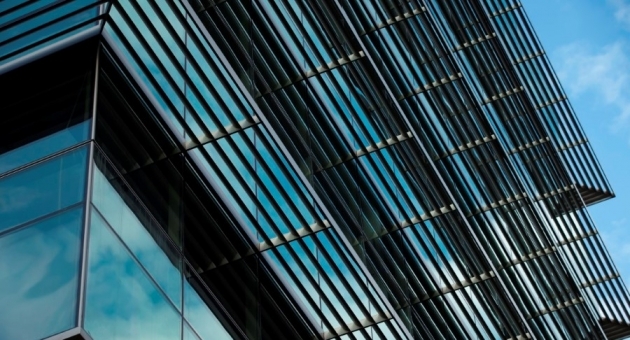SERC: A new era in scientific exploration at Temple
With a dedication planned for this Friday, Oct. 10, during Homecoming Weekend

Temple University’s Science Education and Research Center (SERC) will support scientific inquiry that utilizes both experiments in the lab and work with high-performance computers, seamlessly integrating biology, chemistry, physics and other disciplines. In SERC, faculty researchers and students will design new superconducting and energy-efficient materials, mine big data to understand the spread of disease, and explore the human genome to lay the groundwork for new medicines.
“With SERC’s opening, Temple’s commitment to research that improves lives is now even stronger,” said Temple President Neil D. Theobald, who expressed gratitude for the commonwealth of Pennsylvania’s financial investment in the project. “Temple’s faculty and students now have the space and technology to pioneer discoveries that will impact people in Philadelphia and around the world.”
In addition to new homes for the departments of Physics and Computer & Information Sciences, SERC will house seven research centers. The third floor is home to the Center for Data Analytics and Biomedical Informatics, where researchers improve medical imaging technology and use sophisticated data mining to track the diagnosis and treatment of sepsis, a potentially fatal, hospital-borne infection.
“Scientists and students from different fields working side by side in one large building accelerates collaborative research,” said Michael L. Klein, dean of the College of Science and Technology (CST) and director of the Institute for Computational Molecular Science. “There is no substitute for proximity.”
Researchers working in the fifth floor’s clean rooms, where airborne particles are controlled to lessen the possibility of contaminating delicate equipment, will fabricate advanced materials such as thin-film superconductors used in digital circuits. On SERC’s lower level, a low-vibration, scanning tunneling microscope facility—one of the most sophisticated facilities of its kind in the Philadelphia region—will be used to image superconductors and other new materials at the atomic level to understand their properties and improve their effectiveness.
Before its doors even opened, SERC helped attract leading researchers to Temple. Last year, Laura H. Carnell Professor Ronald Levy moved from Rutgers University to direct the efforts of the new Center for Biophysics and Computational Biology, where researchers will try to understand the mutation patterns of HIV and design drugs that inhibit the highly resilient virus.
This year, Sudhir Kumar moved from Arizona State University to be director of Temple’s new Institute for Genomics and Evolutionary Medicine. Researchers there use powerful computers to analyze vast quantities of genomic data to determine which mutations in our DNA make us susceptible to complex maladies such as heart disease, Alzheimer’s disease and type 2 diabetes.
“Computational, or big-data, science is the next frontier of diverse biological disciplines such as evolution and medicine,” explained Kumar. “Drug discovery and disease remediation is a process with many intermediate stages. Our work is among the earliest steps toward developing effective diagnoses and curing diseases.”
“SERC is already a success because it is attracting world-class researchers to Temple,” said Provost Hai-Lung Dai, who, as former dean of CST, was involved in SERC’s early planning in 2007. “Scientists considering coming here look at the total environment—such as reputation and expertise of colleagues, quality of students, and administrative and other research support, including physical facilities—we offer. They like what they see at Temple.”